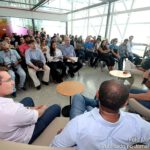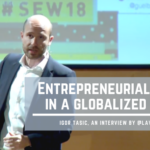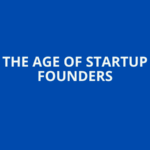“Entrepreneurial talent in a globalized world”? – an interview with Igor Tasic
La Verdad: How much progress has been made in distributed or decentralized innovation systems from the perspective of the individual entrepreneurial talent?
Igor Tasic: The idea is that no company can innovate in isolation, but only within a network. Corporations and even SMEs are looking to connect with talent, particularly entrepreneurs wherever they are. Open innovation programs are gradually becoming the rule, as well as the recognition that it is better to collaborate with multiple entrepreneurs and start-ups with the capacity to bring a small improvement to their product/service instead of trying to reinvent something from scratch. There is a distributed potential of talent all over the world. It is not only in Silicon Valley or in large hubs such as Berlin, London or Singapore where innovation occurs, but someone from the countryside of Brazil, as long as connected to the real needs of a company, can access large innovation projects globally.
“Stop thinking that innovation occurs at a specific place or time. All of us can create and innovate. The thing is, this process happens asynchronously and in multiple locations.”
LV: What role should universities play?
IT: I believe that the university should once again play a role in promoting its formative essence of human capital through the Socratic debate of ideas and projects. Promote not only the transmission of knowledge but also the connection between people and projects, allowing everyone to help each other, creating a true spirit of community. Stanford University is a good example. For many Silicon Valley founders, Stanford is a crucial connection point. That means that the University has the role of a “main square”, a meeting place for talent and ideas.
LV: What should be improved when talking about talent and innovation management?
IT: Essentially, network thinking. Stop thinking that innovation occurs at a specific place or time. All of us can create and innovate. The thing is, this process happens asynchronously and in multiple locations. Therefore, the best way to manage talent and innovation is through “active listening”, that means, letting people have the autonomy to create under a minimum set of instructions, and when something interesting emerges, you get closer to the talent and provide some help, mentorship, support with more resources, making his idea or project scale and impact more people. It is a straightforward concept that often we stop applying due to the need that people have to control and micro-manage.
“Do something. Start anything, a blog, make a cake to sell to your friends, whatever. You don’t need an elaborate business plan to feel what it means to be an entrepreneur. However, you do need to feel the endorphin of the fear and pleasure associated with the act of starting a business.”
LV: What message would you give to entrepreneurs who have not just decided yet on what to do next? What is the way forward?
IT: Do something. Start anything, a blog, make a cake to sell to your friends, whatever. You don’t need an elaborate business plan to feel what it means to be an entrepreneur. However, you do need to feel the endorphin of the fear and pleasure associated with the act of starting a business. This experience allows the future entrepreneur to understand the basics of value creation, resilience, and patience. There is no magic formula for success. However, expert entrepreneurs often start with the primary resources we all possess: who we are, what we know, and whom we know. The expert entrepreneur start with a profound self-reflection to understand (1) what kind of things have to do with his personality, his experiences, his way of being, (2) what specific knowledge he possesses upon which he can build something new and have a competitive advantage, (3) who is in his environment or network that complements him both in experience and capacity to execute. From this point, the entrepreneur follows a more “effectual” path in which the surprises and new resources he obtains will shape new objectives or new tracks previously unimagined. The entrepreneur goes on to control what he can (himself and his environment) and not what he thinks is necessary (the future, others, etc.).
“There is no magic formula for success. However, expert entrepreneurs often start with the primary resources we all possess: who we are, what we know, and whom we know.”
LV: What role do connectivity and a direct relationship with the technology play in a society such as today’s, and how is this transferred to the world of business?
IT: I believe that technology essentially serves to increase efficiency and productivity. This ability to create tools to do more and better is the competitive advantage of homo sapiens over nature and the basis of sustainable economic growth.In a globalized and hyperconnected world, the technology allows us to reduce distances and increase trust among all. In practical terms, this translates into the ability to access a global talent network that is decentralized and doesn’t want to work from a corporate cubicle. Companies that manage to create network management systems capable of leveraging the creative power and connectivity of these talent networks will win. Some examples include technologies that organize collaborative and creative work in communities (e.g., use of augmented reality in solving technical or even medical problems). The inclusion of topics such as blockchain in traditional value chains (e.g., the relationship of large corporations with SMEs across supply chains) are examples of how connectivity and a direct link with technology begin to set the tone for business connections in the 21st century.





